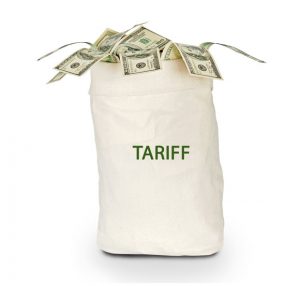First, Canadian aluminum … could U.S. target steel next for tariffs?
Following President Donald Trump’s reimposition of 10% import tariffs on Canadian aluminum, the U.S.’s northern neighbor is now sweating the possible reimposition of steel tariffs. The U.S. imposed the Section 232 tariffs in 2018. Eventually, the U.S. lifted them following the successful agreement of the United States-Mexico-Canada Agreement (USMCA).
“I hear that they’re going to do tariffs on our steel industry as well,” Ontario Premier Doug Ford is quoted in Bloomberg saying during a press conference in Toronto last week. “There are 40 categories of steel, they’re going to go and tack on a certain percentage — I’m not too sure what percentage it is — onto our steel.”
It is likely the uncertainty of the situation is creating panic north of the border.
Steel mills struggle with low capacity utilization
Capacity utilization on both sides of the border is woefully low.
Producers of steel are suffering from the ongoing pandemic while trying to make up for the impact of lockdowns earlier in the year.
According to the American Iron & Steel Institute, domestic raw steel production was 1.33 million net tons for the week ending Aug. 1. The capability utilization rate reached 59.3% compared to 79.3% in the same period last year. Meanwhile, the rate had reached 58.9% the week prior.
The justification for the reimposition of the aluminum tariffs was the U.S. has suffered a surge in imports of the light metal. Canada, meanwhile, vehemently denies that argument. Canada says imports remain at long-term historical norms.
Imports of steel as a percentage of total imports have risen this year from Canada, according to U.S. import data. June’s is up from 20.2% of total imports last year to 26.6% this year. However, it should be noted that imports last year faced a 25% import tariff. However, the percentage is up sharply from just 16.3% of the total in May.
Comparing month by month holds hazards, as volumes vary. A smoothed average is better and comparing several years is better still. The imposition of tariffs previously would likely have impacted Canadian-sourced metal to some extent.
Canada will no doubt be hoping Trump’s latest move is aimed at domestic politics (in view of the upcoming elections).
But regardless of the election outcome, the move has shaken producers and consumers on both sides of the border. Many of those producers and consumers had assumed the USMCA had settled North American trade policy for the foreseeable future.
The one certainty this year would appear to be volatility and uncertainty.



Leave a Reply